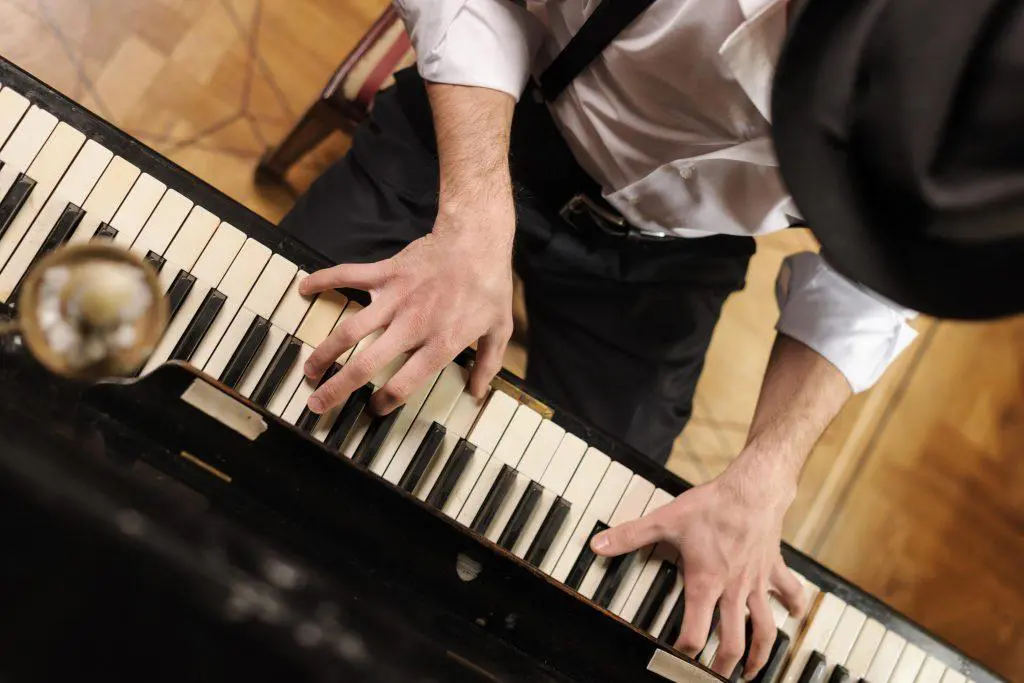Efficient Piano Practice

Image Credit: Last Minute Musicians
For efficient piano practice, start with the end result and work backward, and focus on what needs practice.
When I was younger, I didn’t worry about efficient practice. I spent four hours a day, six days a week, for many decades, practicing. I was looking mainly for effectiveness, not efficiency. I’m now a professional piano teacher. An adult with a life full of responsibility. I’m lucky to get two hours of practice … often, only one. Efficiency is everything. My students, who are inundated with extra-curriculars and AP classes, are in the same boat.
Start with the end result and work backward.
“Slow practice” seems to be the mantra of every piano teacher, including me. However, when learning something new – especially if it’s difficult – I like to begin with fast practice. I work my way into slow practice. I need to understand the end result, so that I know what the goal of my practice is. For instance, am I using a technique and a fingering that will work at performance tempo?
How can I answer that question unless I can play the piece at performance tempo? And how can I play a piece that I don’t know at performance tempo? By breaking it into tiny, little bits, that’s how.
Hand Positions
Most of the time, that means one hand position at a time. A “hand position” is as many notes as I can play without crossing over or under my thumb. Or as many notes as I can play before moving my hand to a new set of keys. This is meant to be a relatively small group of notes. If the music remains in one position for an extended period, I’ll break it down into small, logical, patterned units.
As I rule, I determine these hand positions intuitively, as I – like every pianist – ignore any printed fingerings. So I give my intuition a chance. However, once I have, I always – always – examine any printed fingerings. If the fingering doesn’t match what I intuited, I evaluate it. What performance goal made this a good fingering choice? What advantages does this fingering have over mine? Half the time, I’m persuaded to use the printed fingering. I often don’t feel I need to write my own fingerings in. I assume that the intuition that produced them will reproduce them. But honestly, I should write them in, and I know it.
Speed
I practice these hand positions at a speed that ideally exceeds performance tempo. Aside from playing them faster than I ultimately will, I want them to sound exactly like they will in performance. I want the right dynamic, articulation, shaping, color … everything. I need to use techniques that will produce all of this with the least amount of tension. I’ll lock in the right sound and determine the physicality that produces it. Only then do I start to slow things down. Only then do I rehearse the sound and physicality in a way that allows me space to think. I need time to plan. Time to branch out into ever-larger units.
Focus on what needs practice.
During this fast-practice process, it inevitably occurs to me that some things are harder than others. So I do this:
- Isolate the hard things and practice them all by themselves – sometimes to the point of ignoring the easier things
- Spend my time exclusively on isolated hard spots
- Maybe never play the piece through as a whole for weeks
For many people, this approach could suck the joy right out of practice. It doesn’t for me. Seeing the progress that I make on a day-to-day basis on these isolated hard spots is rewarding. Once I do get to the point of playing the whole piece, I’ll feel confident about these hard spots. I won’t feel afraid of them or frustrated by them. This keeps me positive and motivated.